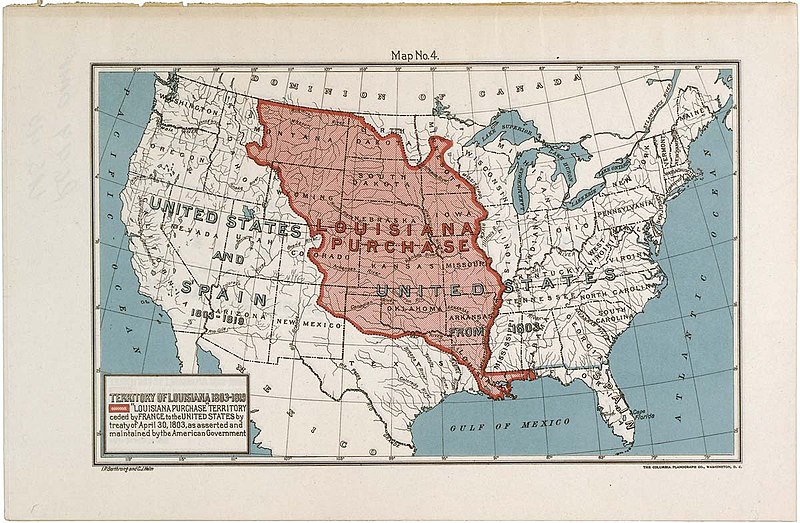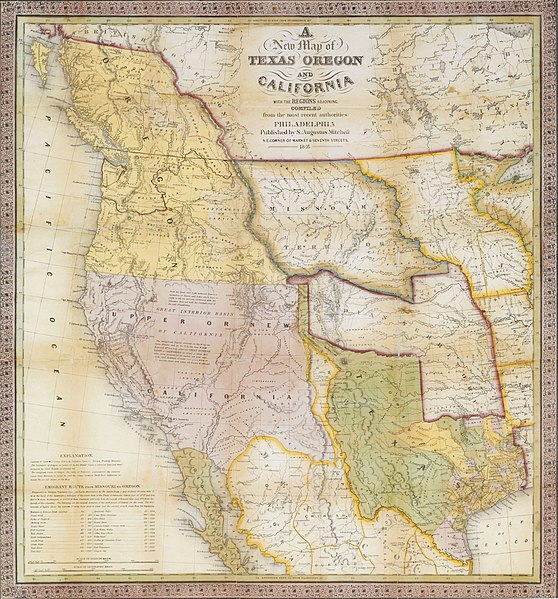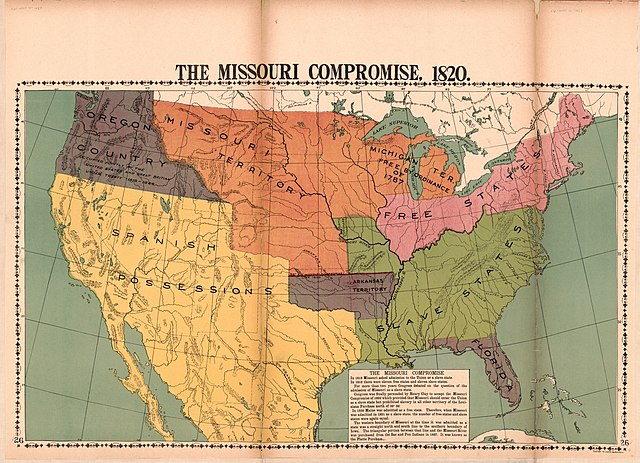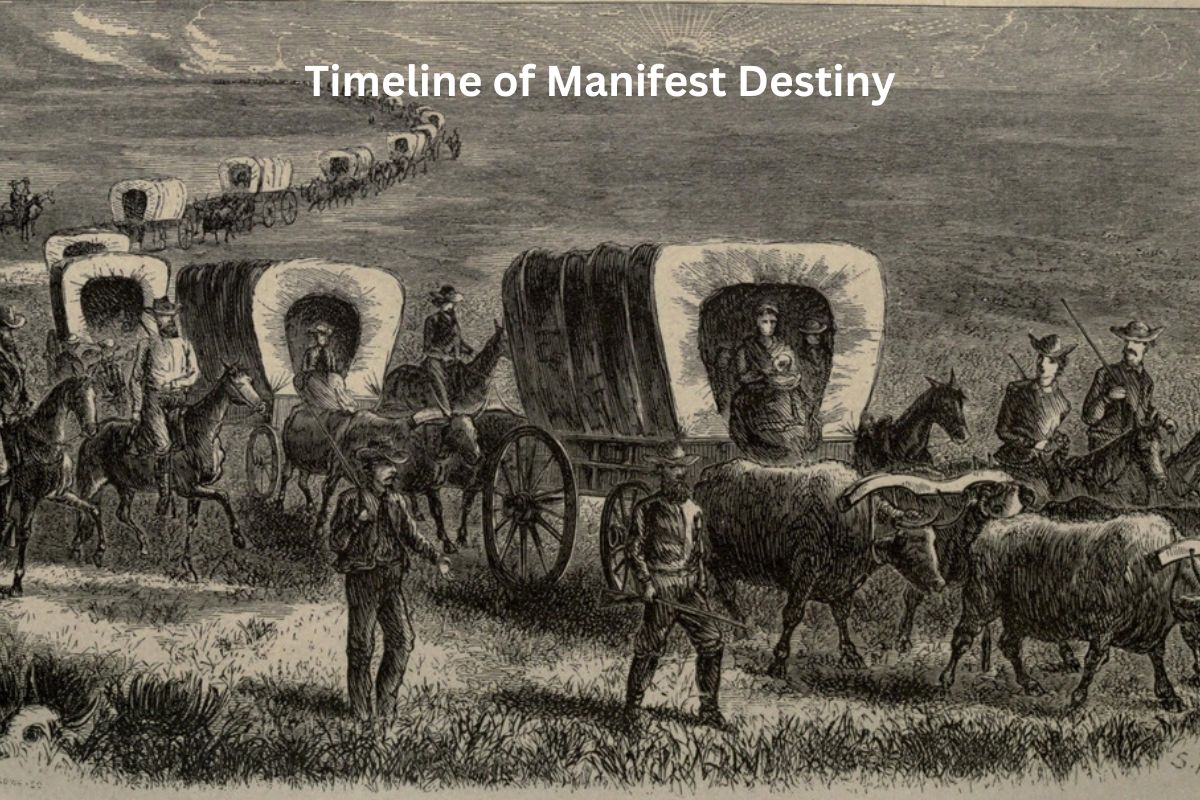Manifest Destiny was a powerful belief in 19th-century America that shaped the nation’s westward expansion and its place on the world stage.
Rooted in the idea of divine providence, it held that the United States was destined to expand its territory from coast to coast.
This fervent belief influenced key events and policies, such as:
- The Louisiana Purchase
- The Oregon Trail
- The Mexican-American War
- The acquisition of Alaska
Manifest Destiny played a significant role in defining the nation’s identity and its relentless pursuit of territorial growth during the 1800s.
| Year | Event |
|---|---|
| Early 1800s | 1803: The United States acquires the Louisiana Territory from France through the Louisiana Purchase, doubling the size of the country and providing a vast area for westward expansion. |
| 1819: The Adams-Onís Treaty with Spain establishes the western boundary of the United States as the Sabine River and formalizes U.S. claims to Florida. | |
| 1820s | 1823: The Monroe Doctrine asserts U.S. opposition to European colonization in the Western Hemisphere. |
| 1824: The Bureau of Indian Affairs is established to oversee Indian affairs and facilitate westward expansion. | |
| 1830s | 1830: The Indian Removal Act is passed, leading to the forced removal of thousands of Native Americans from their ancestral lands in the Southeast to the Indian Territory (now Oklahoma). |
| 1836: Texas declares its independence from Mexico, eventually leading to the Texas Revolution. | |
| 1839-1846: The Oregon Trail becomes a major route for settlers moving to the Pacific Northwest. | |
| 1840s | 1845: The United States annexes Texas, leading to the Mexican-American War. |
| 1846: The Oregon Treaty with Britain establishes the 49th parallel as the U.S.-Canada border in the Pacific Northwest. | |
| 1848: The Treaty of Guadalupe Hidalgo ends the Mexican-American War, ceding a significant portion of Mexican territory to the United States, including present-day California, Arizona, New Mexico, and more. | |
| 1850s | 1853: The Gadsden Purchase secures a strip of land in present-day Arizona and New Mexico, enabling the completion of the transcontinental railroad route. |
| 1854: The Kansas-Nebraska Act opens new territories to settlement and allows residents to decide whether to permit slavery, leading to violence in “Bleeding Kansas.” | |
| 1860s | 1867: The United States purchases Alaska from Russia, further expanding its territory to the west. |
Manifest Destiny Timeline
1803: The Louisiana Purchase
In 1803, the United States, under the presidency of Thomas Jefferson, made one of the most significant land acquisitions in its history known as the Louisiana Purchase. The United States acquired approximately 828,000 square miles of territory from France for $15 million.
This purchase effectively doubled the size of the country, stretching from the Mississippi River in the east to the Rocky Mountains in the west and from the Gulf of Mexico in the south to the Canadian border in the north.
Also Read: Facts About Manifest Destiny
The acquisition of this vast territory opened up immense opportunities for westward expansion, economic development, and increased access to valuable resources.

1819: The Adams-Onís Treaty
In 1819, the United States and Spain signed the Adams-Onís Treaty (also known as the Transcontinental Treaty) which had significant implications for the country’s territorial expansion. The treaty settled several long-standing border disputes between the two nations.
It established the Sabine River as the western boundary of the United States and recognized Spanish claims to Florida. In exchange, the United States renounced its claims to Texas, which was then a part of Spanish Texas. The treaty effectively set the stage for later American claims to Texas.
1820s: The Monroe Doctrine and the Bureau of Indian Affairs
In 1823, President James Monroe issued the Monroe Doctrine, a foreign policy statement that declared the United States’ opposition to further European colonization or interference in the affairs of the independent nations of the Americas.
This doctrine asserted that any European attempt to reestablish colonial rule in the Western Hemisphere would be seen as a threat to the United States. It marked a significant step in the nation’s assertion of its influence in the Western Hemisphere.
In 1824, the Bureau of Indian Affairs (BIA) was established within the Department of War. The BIA was responsible for overseeing and managing relationships between the federal government and Native American tribes.
It played a role in the implementation of the Indian Removal policy in the 1830s, which forcibly relocated many Native American tribes from their ancestral lands in the Southeast to the Indian Territory (now Oklahoma). This policy was driven by the belief in Manifest Destiny and the desire for westward expansion.

1845: Annexation of Texas and the Mexican-American War
In 1845, the United States annexed the Republic of Texas, which had gained its independence from Mexico in 1836. This annexation led to tensions between the United States and Mexico, as Mexico had never recognized Texas’ independence.
The annexation of Texas was a major step towards westward expansion and the eventual fulfillment of Manifest Destiny.
The annexation dispute escalated into the Mexican-American War (1846-1848) when fighting broke out between American and Mexican forces along the border of Texas. The war ended with the Treaty of Guadalupe Hidalgo in 1848, which had significant consequences for the United States’ territorial expansion.
Mexico ceded a vast amount of territory to the United States, including California, Arizona, New Mexico, Texas, and more. This acquisition, known as the Mexican Cession, greatly expanded the U.S. territory in the Southwest and further fueled the belief in Manifest Destiny.
1853: The Gadsden Purchase
In 1853, the United States made the Gadsden Purchase, acquiring a strip of land in present-day southern Arizona and southwestern New Mexico from Mexico for $10 million. The primary reason for this purchase was to secure a suitable route for the construction of a transcontinental railroad.
The Gadsden Purchase allowed for the establishment of a southern route, which later became part of the Southern Pacific Railroad. This acquisition played a crucial role in connecting the eastern and western coasts of the United States and promoting economic growth through improved transportation.

1854: The Kansas-Nebraska Act and “Bleeding Kansas”
The Kansas-Nebraska Act of 1854 was a pivotal piece of legislation that allowed settlers in the Kansas and Nebraska territories to decide for themselves whether to allow slavery within their borders. This act effectively repealed the Missouri Compromise of 1820, which had prohibited slavery in territories north of a certain latitude line.
The passage of the Kansas-Nebraska Act led to intense conflict in the Kansas Territory, as pro-slavery and anti-slavery settlers flooded in, each hoping to influence the territory’s status.
This period of violent conflict became known as “Bleeding Kansas,” and it was a precursor to the broader sectional tensions that would eventually lead to the American Civil War. The Kansas-Nebraska Act highlighted the deep divide over slavery in the United States and the consequences of westward expansion on the issue.
1867: Purchase of Alaska
In 1867, the United States purchased Alaska from Russia in a transaction known as the Alaska Purchase. This acquisition added a vast expanse of land in the far northwestern part of North America to the United States.
At the time, Alaska was seen as a remote and largely unexplored territory, but it later proved to be rich in natural resources, including gold, timber, and fisheries. The purchase of Alaska marked the final significant expansion of U.S. territory during the 19th century.
